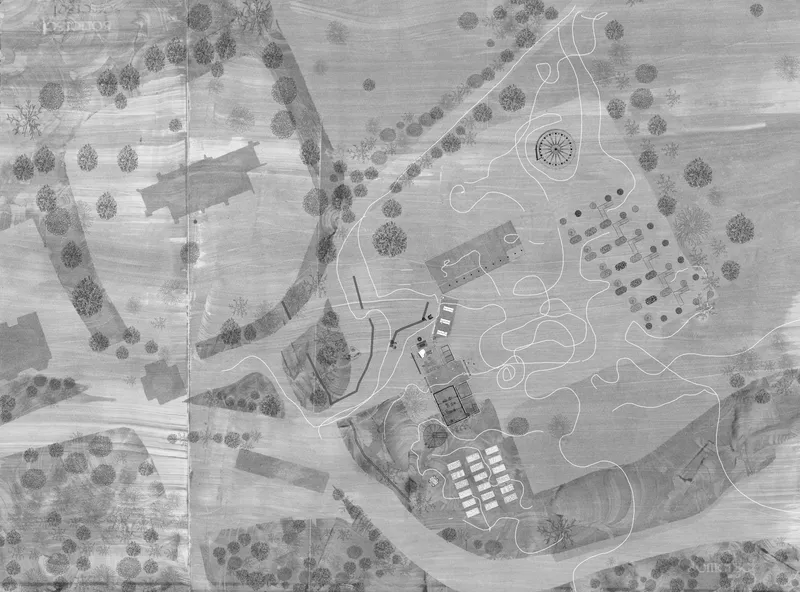A Contemporary Rural II Stories of the Territory
For the 2nd year, the studio has been immersed in the rural, engaging with the condition of modern nature*, a reality experienced by many, far from arcadian. Charting multiple walks in the rich, riotous territory of the Essex Estuary, pop-culture, film, photography and literature are used as means to interrogate and comprehend. A situated response is gradually formed, producing work that values and exploits the existing ad-hoc, incongruous situation, exploring questions around identity and displacement. Concerned again with re-populating the landscape, the studio asks what form a contemporary vernacular approach might take? Implicit is a counter-position, a bid for a more local existence based on a circular economy, a critique of mass urbanisation and consumer culture that favours a humane, place, landscape and climate-sensitive architectural response.
A territory long enmeshed in histories of radical settlement and ideologies, from Tolstoyan Purleigh Colony to Booth’s Salvation Army model farm- brickworks, Essex is a natural home for inventive thinking, the studio sits within this historical context; exploiting the ad-hoc languages of Basildon’s self-built Plotlands, coastal Radar Towers and Oyster Sheds of Mersea Island, seeking cultural continuity. Closer in, Mucking hamlet hosts layers of settlement from Roman to Anglo-Saxon, extensive 20th Century gravel extraction and later, deep land-fill, resulting in a scarred landscape now slowly healing. Self-selected programmes produced rooted briefs, from horse sanctuary to experimental farm, Essex Wildlife Trust site, offering agrarian and production-based futures, set in drought and flood sensitive landscapes. Material strategies adopted local motifs, the clay of the estuary, the practice of Spolia encountered. A language began to emerge that sought to amplify and continue the regional timbre.
*Derek Jarman on Dungeness
‘…the Essex shoreline is especially memorable for its obstinate refusal to conform to conventional notions of what is beautiful and picturesque. This landscape is singularly rich in history, and full of layered meanings and visual pleasures…’
From book ‘350 miles. An Essex Journey’ by Jason Orton and Ken Worpole





















